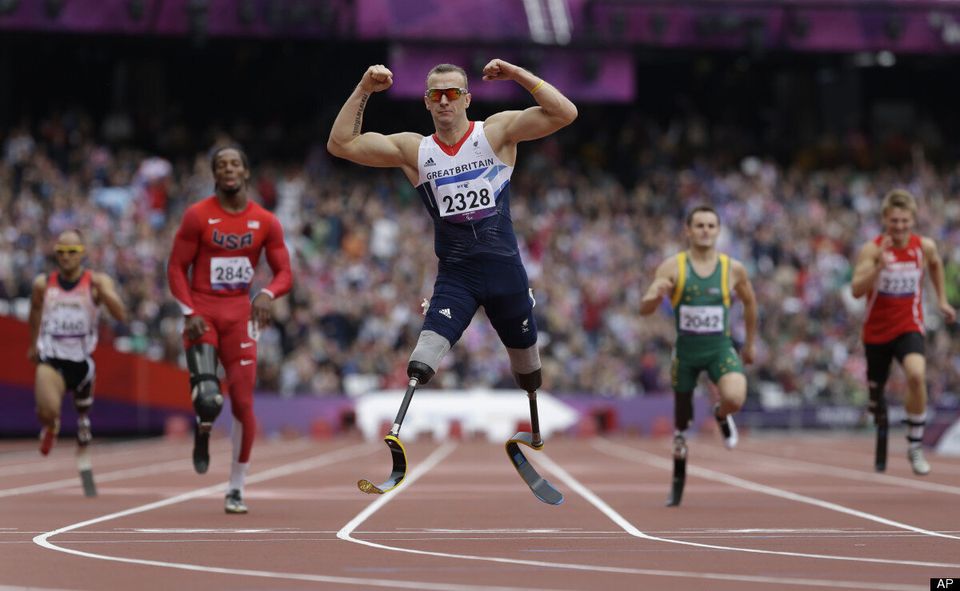Day one of Gr. 9 gym class can be nerve-wracking. The basic fitness evaluation -- running laps for six minutes around the gymnasium -- holds potential for "epic fail" in front of friends, peers and teachers. Fear of embarrassment generates as much sweat as the test itself.
This year on day one, Emily de Boer paused for a brief moment. A tragic spinal injury left her paraplegic two years ago, and the 13-year-old former star athlete spent most of last year's gym class on the sidelines.
"Oh, I'm not letting you off the hook," nudged Emily's affable new teacher, Rod Jensen. "You're doing this."
Exactly the words she wanted to hear. In her wheelchair, Emily approached the tiny orange pylons encircling the gym, and she wheeled hard for six full minutes -- cheeks red and lungs winded -- without a stop or a hint of self-doubt.
As we recognize the International Day of Persons with Disabilities on December 3, Emily's experience represents the considerable progress we've made toward the full participation of people with disabilities in society. Emily's school is equipped with ramps and curb cuts, elevators and wheelchair-friendly washrooms. A monumental effort by local businesses, contractors and friends helped her family build a fully accessible home.

(Emily de Boer with friends.)
But what's most important to Emily in her experience at R.A. McMath Secondary in Richmond, BC, is being surrounded by a community that sees no limit to what she can be, and do, as a teenager with a disability. It's an environment conducive to thriving that any of us would be lucky to live in.
After surgery for a curved spine caused a catastrophic injury to her T11 vertebra, Emily spent six difficult months in hospital, adapting physically and psychologically to her new reality. But her friends and teachers visited often, as an intentional reminder that her old life was still there for her. Emily began seeing a recreational therapist who encouraged her to try "all these weird sports" like curling and sledge hockey. "I never had anyone say, 'You can't try this,'" recalls Emily.
It's precisely the kind of public attitude toward removing barriers for people with disabilities that the Rick Hansen Foundation has strived to promote over the past 25 years as part of its core mission to create an accessible and inclusive society. And empowering young people to create the inclusive world they want to see is what drives the work of Free The Children. So Emily's story is something to celebrate for both of us.
Emily's mission is to be a "normal" teenager, with the same appetite for new adventures, drive to succeed, and yearning for independence as her peers. In her school's sunlit, three-storey rotunda, she blends seamlessly among the hundreds of students socializing between classes.
Emily's shop teacher, Robert Fernandez, adapted a workstation by building a small bench and mounting machines tailored for Emily: a scroll saw, a disk sander with a shorter belt, a vice and a personal vacuum system to remove sawdust. This clever set-up enabled her to complete the same classic shop projects as her classmates: coasters and ping-pong paddles.
"I think if I were making something completely different," reasons Emily, "all the kids would be like, 'Why is she doing that? Oh, it's because she can't make this.'"

(Emily de Boer and Rick Hansen fishing)
School administrators ordered accessible desks, but by the time they arrived, Emily had already figured out how to fit into the regular desks. "The special desks are just sitting there," laughs Principal Neil Kamide. "We'll have other students who will use them, but that's so typical of Emily. We're happy to provide the things she requires, but my sense is that if they weren't provided, she'd make do."
When asked what her ideal world for paraplegics looks like, without hesitation Emily says (with a chuckle), "All ramps and no stairs." But after a moment, she returns to the social aspect. "I think that a lot of people's perception would be different. Instead of 'What happened to her,' it would be like, 'There she is. That's just another person.' I would be different the same way as people have different hair colours."
What would she say to another teenager who becomes disabled? "Try your hardest to fit in with everyone else. Don't be like, 'Oh I can't do this because of my wheelchair.' Don't avoid something because it doesn't look easy."
It appears that Emily avoids nothing. Just like Rick had the support of his volleyball coach after his injury 40 years ago, Emily has adult mentors who encourage her to continue pursuing her passions, including athletics. She's developed a great one-handed dig that landed her in the advanced volleyball group in gym class, and she plays field lacrosse with both hands while classmates take turns rolling her wheelchair downfield.
What's changed since Rick's accident is that society's perceptions and expectations aren't holding Emily back. In fact, in Emily's circle of friends, they're holding her up.
"In lacrosse, I tip over a lot," confesses Emily with no hint of embarrassment. Is it hard to get back into the chair? "Not when there are so many people around."
Through her energy and determination Emily has brought her community together to become more inclusive. She has also inspired others who face similar challenges. On December 3, the International Day of Persons with Disabilities, what will you do to be a difference maker and create an inclusive world for everyone?
Rick Hansen is the co-chair of the Rick Hansen Foundation and Craig Kielburger is co-founder of Free The Children.
